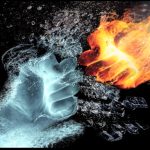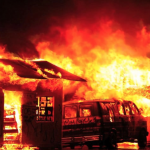“The general public perception of the apocalypse is that it will manifest itself all of a sudden, as some cataclysmic event, which will sweep all before it into oblivion in one giant stroke. But that simply isn’t true – it’s happening right now, in slow motion, in everyday life, as our natural resources are depleted, and we continue to access each other through screens rather than actual contact.
Thus, this video, composed entirely of cinemagraphs, shows one part of the image in motion, and the other part, frozen in time – a fixed point in an era of social, political and ecological collapse. These are memories – memories of a time when change was possible, when things could be rolled back. That’s no longer possible now, as we view images of a time lost to authentic recall.” – Wheeler Winston Dixon
“Moments to remember are just like other moments. They are only made memorable by the scars they leave.” – Chris Marker
The James Ryan Professor Emeritus of Film Studies at the University of Nebraska, Lincoln, Wheeler Winston Dixon is a teacher, filmmaker, the author of more than thirty books, and over a hundred articles. As a film and video artist, Dixon's works have been screened at The Whitney Museum of American Art, Anthology Film Archives, The Museum of Modern Art, The BWA Contemporary Art Gallery, LA Filmforum, The Microscope Gallery, The British Film Institute, Studio 44, OT301, Filmhuis Cavia, The Jewish Museum, The Millennium Film Workshop, The San Francisco Cinématheque, The New Arts Lab, The Collective for Living Cinema, The Kitchen Center for Experimental Art, The Filmmakers Cinématheque, The Amos Eno Gallery, Sla307 Art Space, The Oberhausen Film Festival and at numerous universities and film societies throughout the world. In 2003, Dixon was honored with a retrospective of his films at The Museum of Modern Art, and his films were acquired for the permanent collection of the Museum, in both print and original format. Since 2015, Dixon has been working in HD video. In 2019, his new video work - more than 500 videos in all - was collected in the UCLA Film Archive in Los Angeles.


